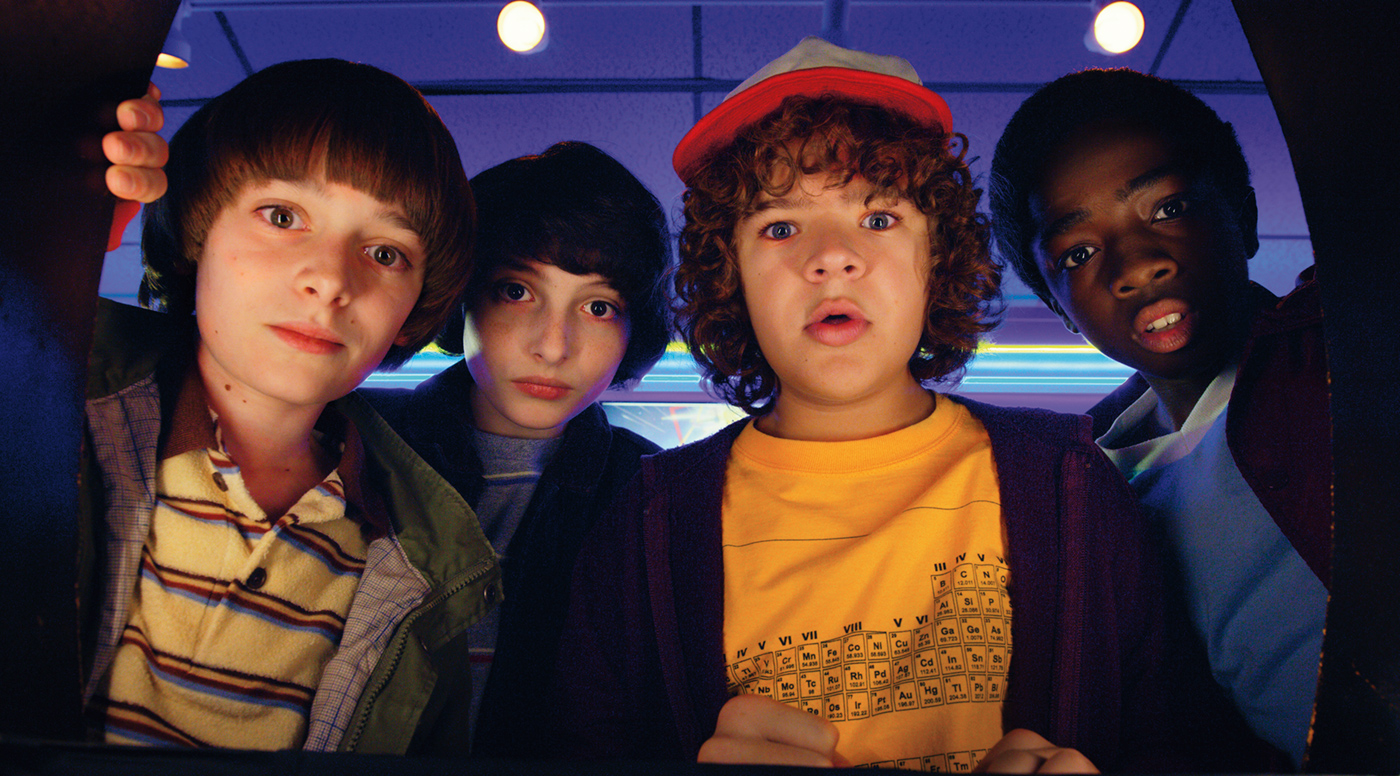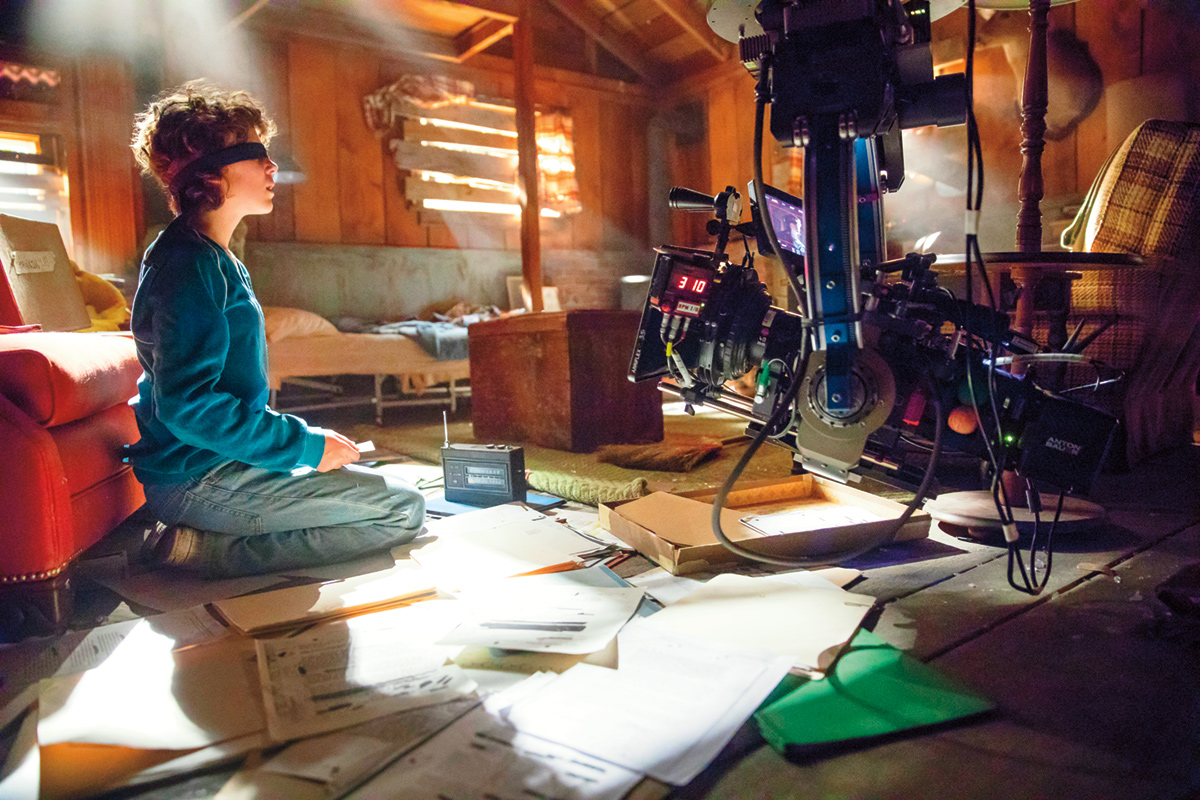
Tim Ives channels his inner Allen Daviau for the 1980’s inspired sci-fi series Stranger Things.
With the hit Netflix series Stranger Things having recently streamed its second season, showrunners Matt and Ross Duffer have solidified their hold on a new and popular cinematic genre: 1980’s-inspired Spielbergian sci-fi/pop. Or as Stranger Things DP Tim Ives, whose work on the pilot for Mr. Robot, as well as HBO’s Girls, drew the Duffers’ attention puts it: “It was brought to me in a package that said, ‘A love letter to the 80’s.’ But not in a [lip service] way with random nuances; they wanted to reflect the techniques available then, to capture a film look from back in that time.”
The Duffers and Ives talked about the show’s biggest inspiration – Steven Spielberg, and films like E.T. the Extra-Terrestrial, Close Encounters of the Third Kind and The Goonies, as well as cinematographer Dean Cundey, ASC’s work on the Back to the Future films, and even James Cameron’s Terminator and Alien series. “Spielberg took ordinary suburban America and made it feel magical,” Ross Duffer observes. “And Tim is a fan of all the same stuff as us,” particularly the work of Allen Daviau, ASC. “Even before we talked, he had started re-watching a lot of the movies that we were clearly inspired by.”
Stranger Things focuses on four nerdy 12-year-old boys in 1983, obsessed with Dungeons and Dragons, one of whom, Will Byers, is taken by a mysterious inhabitant of a dark, disturbing and parallel landscape, referred to as the Upside Down World (UDW), which has entered Will’s world due to a rift between the two universes. That rift was inadvertently created by a mysterious girl known only as “Eleven,” who broke out of a government lab in Hawkins, Indiana, where the show takes place, the only home she has known and where her mysterious powers were being exploited.
Eventually, Will is recovered by his mother (Winona Ryder) and the town’s police chief, Hopper (David Harbour); although, in the second season, he faces an even more terrifying and powerful force at the center of the UDW, referred to as the Shadow Monster. Throughout Season 2, Will unwillingly slips back and forth between his world and the UDW, while the town’s residents try to avoid the vicious four-legged “Demodogs” – younger versions of the creature seen in Season 1 – which get around via a huge network of tunnels they have mined.
The Duffers had originally envisioned Hawkins as a seaside town, much like Amity in Spielberg’s Jaws. Working with production designer Chris Trujillo, the brothers scouted everywhere from South Carolina to the upper Northwest – deciding on bits and pieces of small towns in and around the Atlanta area. “A lot has been shot in Atlanta, so we had to go a little farther out to find our true town center,” i.e., in Jackson, 40 miles southwest, Trujillo notes. Interiors are filmed on four stages at EUE Screen Gems. Additional sets – for the massive tunnels, some UDW settings and Eleven’s “Void” set (see below) – were shot at a converted warehouse in nearby McDonough.
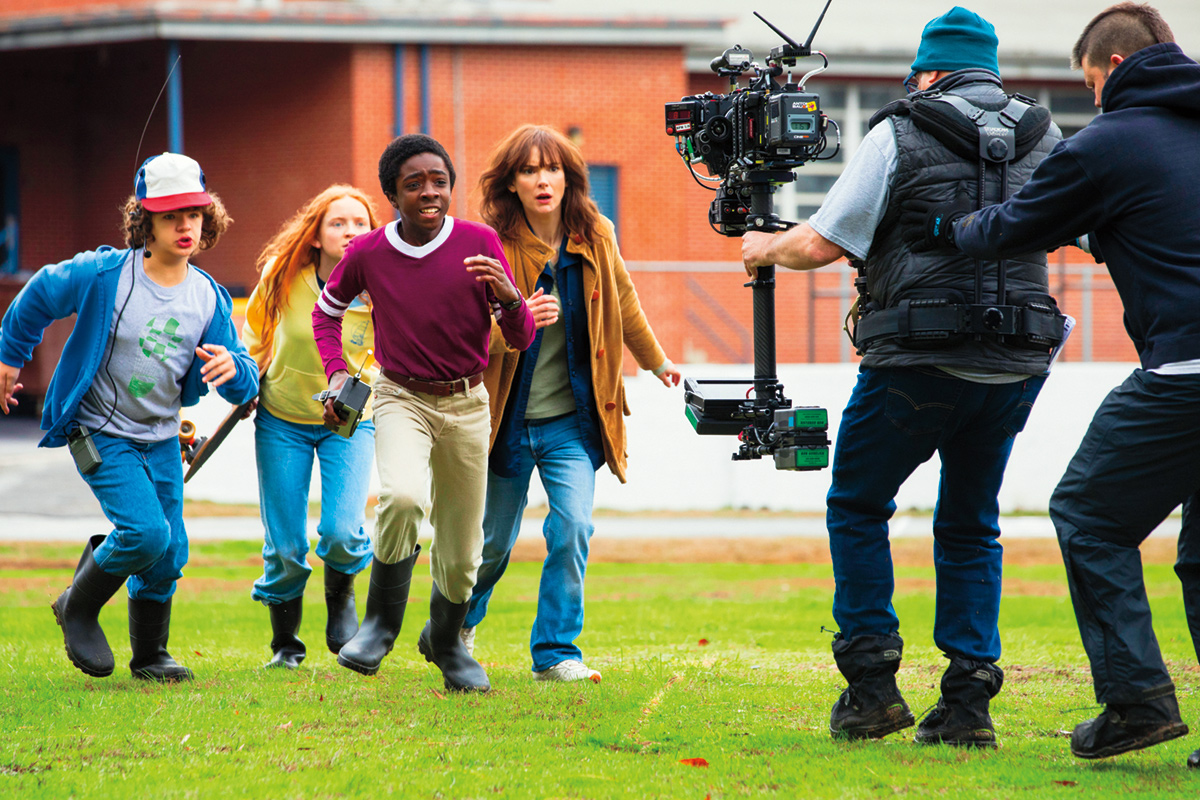
Season over season, Ives has assembled a skilled IATSE team, including A-Camera/Steadicam Operator Bob Gorelick, SOC, who suggested Jeff Crumbley, SOC, to be B-Camera Operator; Gaffer Daniel Murphy, Season 1 Key Grip Benny Smyth (Ray Brown takes Smyth’s place for Season 2); and Dolly Grip Chris Chapman, indispensable in mastering some of Ives’ unique camera work. “The camera was always moving,” describes Season 2 A-Camera 1st AC Mary Stankiewicz. “And when you get a good dolly grip like Chappy, and an amazing operator like Bob, it’s a perfect dance.”
With the Netflix mandate for high-resolution capture, Ives used the 6K RED EPIC DRAGON for Season 1, and the 8K HELIUM the following year (shifting to the MONSTRO for Season 3). As Ives relates: “I always think of the Red as a Kodak film stock I used to love – 5291. It has that velvety feeling that’s right for this show.”
A variety of lenses were tested to help achieve a more diffuse eighties look, with Ives opting for Leica’s Summilux C Series primes (and occasional Fujinon Alura zooms). “These Leica lenses are gorgeous,” notes Gorelick. “They have a very natural look, and their color reproduction is extremely accurate.”
Ives was afforded an on-set DIT for Season 1, but not in subsequent seasons. So the show’s colorist, Skip Kimball, at Technicolor (now with EFILM), created a few simple LUT’s for Ives to use in camera, as well as have applied to dailies, with Kimball applying his final looks via DaVinci Resolve back in Hollywood.
The Duffers originally pitched Netflix on directing all eight episodes of Season 1. But after shooting the first two episodes (they are filmed in pair blocks), Matt Duffer notes: “It became clear we weren’t going to get upcoming scripts completed, so our Producer, Shawn Levy, flew in like Superman” to direct the following pair.
Levy needed a DP with whom to prep his episodes, so Ives suggested his Mr. Robot colleague Tod Campbell. “Tod did such a great job on Mr. Robot, so it was pretty much a no-brainer,” Ives recalls. “He instantly became part of the Stranger Things family,” returning the following season for two more Levy-directed episodes. Matt Duffer says he and Ross enjoyed the [directing] collaboration so much [in Season 1], “we decided to free ourselves up a little more,” bringing in Andrew Stanton (Toy Story) and Rebecca Thomas, who directed Season 2’s standalone episode, where Eleven goes in search of her lost sister (shot by Guild DP David Franco).
Ives says the prep process with the Duffers is almost as rewarding as shooting episodes. “Our method is to lock ourselves in a room and read the script together, and sometimes act out the parts together, to figure out the tone of each scene and talk about camera placement,” he describes. “It gives us a very strong language on set, knowing exactly what we want to do.”
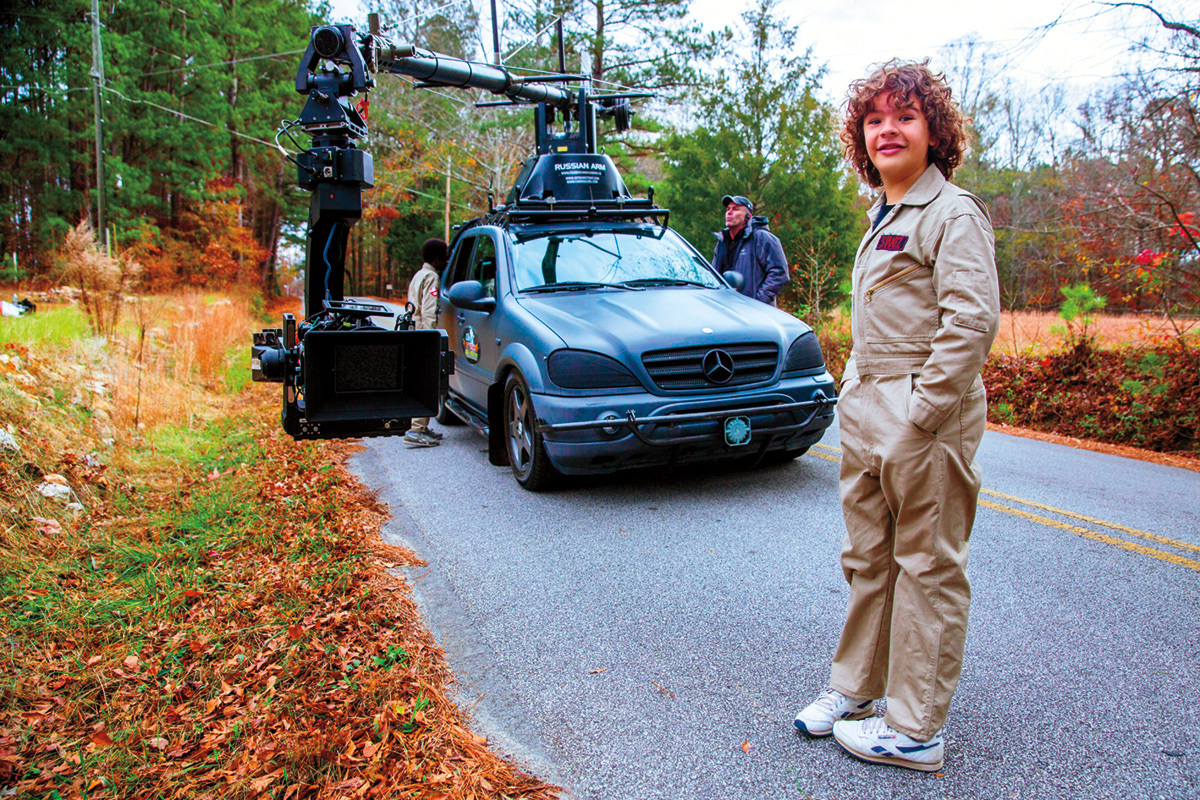
In Season 1, the many looks of the UDW, from the environments to the evil creatures, were done in camera, because as Ives describes: “It’s part of the magic of those [1980’s-era] films. They didn’t have high end VFX – they did what they could with a trick of the eye.” Although with the show’s success, Season 2 has afforded more VFX.
Ross Duffer notes that when the camera moves, it is with purpose.
“Something we could see from Tim’s work on both Girls and his Mr. Robot pilot is that he makes clear choices,” Duffer shares. “It’s not just grabbing stuff and seeing how the editors put it together.” Adds Gorelick: “It’s traditional storytelling, pre-MTV days, when the audience wasn’t bombarded with images and fast cuts.”
Season 1’s monster – dubbed the Demagorgon by the boys – was a puppeteered man-in-a-suit built by Spectral Motion. The suit included stilt legs and a puppeteered head with four toothful opening leaves, revealing actor Mark Steger’s face, covered with green dots and eventually replaced with a hungry throat by VFX supervisors Mark Kolbe (Season 1) and Paul Graff (Season 2), who also skinnied up its body. (This work was also done in some cases by the Aaron Sims Company.)
The key was not to reveal the man-in-the-suit for as long as possible.
“For terror, the brothers wanted Spielberg’s Jaws approach,” Ives recounts. “The best way we thought to scare people was to not show them what you’re telling them is really scary. So you may only see him for 12 frames.” Adds colorist Kimball, “We wanted the audience to have to rewind to go back and see it again – ‘What did I just see?’”
And as Gaffer Murphy recounts about Season 1: “Tim would use back light, side light – never any fill to always keep [Demogorgon] dark. When you create a silhouette, with low lights, backlighting the atmosphere behind him, he just moves through those shapes.”
With the show’s success, Season 2’s beasts, termed Demodogs, were afforded a full VFX presentation. Graff’s team would bring physical cutouts to the set to help guide the camera team through specific shots – such as when the dogs attack Steve (Joe Keery) in a junkyard. For the cute “pollywog” infant version of the beast, which Stankiewicz says “looked like a piece of sushi,” smaller rubber versions were employed.
“When we originally pitched the show to Netflix,” Ross Duffer recalls, “we said we wouldn’t be going into the other dimension at all. But as the story evolved, it became necessary – so the initial approach was that of ‘the Void’ – the place where Eleven goes to connect with others’ consciousness.” And for that, the Duffers wanted a true environment – not something all CG. “We wanted it based in reality,” Ross adds.
Ives says their vision was for “a cold, lifeless environment that felt like seeing remnants of an apocalypse. Something bad had happened, and there was no joy or life. It was a place ‘in between worlds,’ as the Duffers put it. And the simplest and fastest way, particularly when shooting Tungsten at night, was to change the color temperature. We rated at 3200 for the real world, and then took it to 2000, which would force all the lights to a blue we liked.”
Adds Murphy: “We would just change the lighting from being a high-key light to a real soft diffused look everywhere, with a lot of book bounce-style lighting. Kept it really, really soft and without shadows. [Skip Kimball] helped give it a more monochromatic [look, in post]. Like a steely cool, with glowing highlights.”
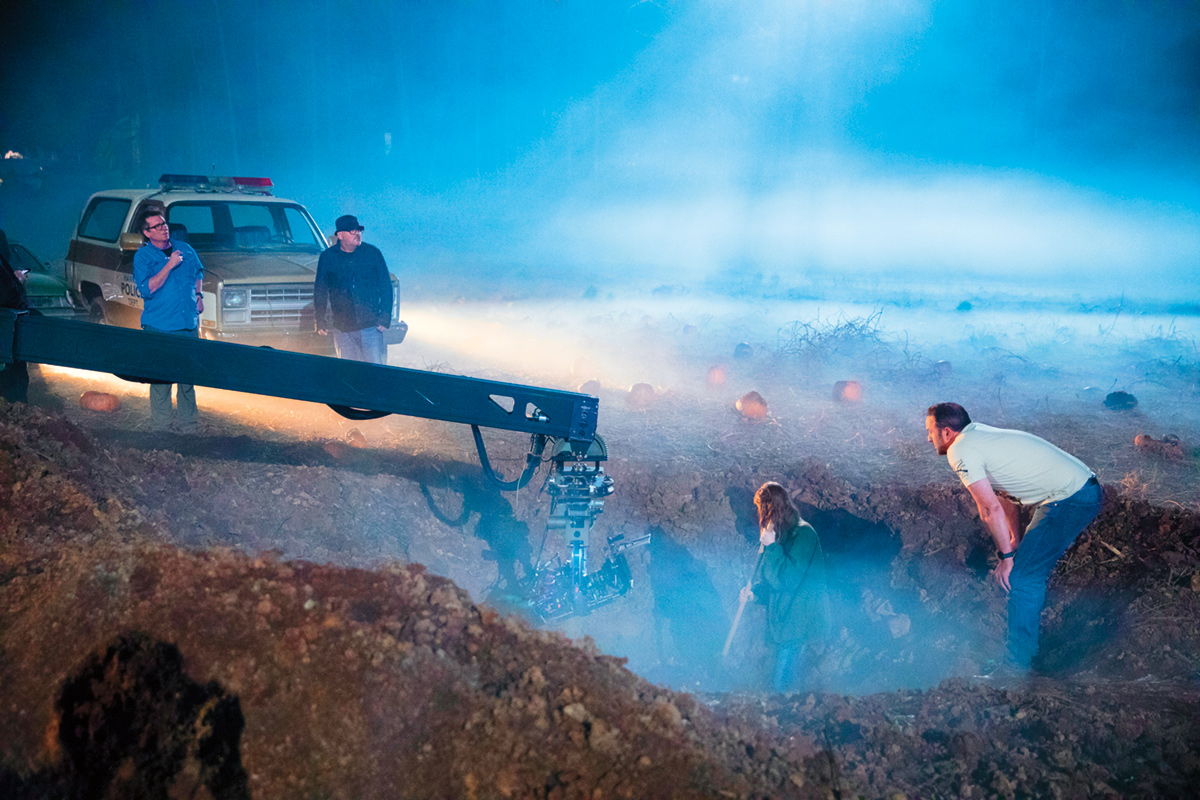
For scenes where Will jumps from present time to the UDW – on the same set – the team would move on to another location, while interior sets and locations were “netherized” – i.e., the netherworld version of the UDW with the addition of pulsing vines and slime (Methocel) courtesy of Special Effects Lead Caius Man and his team, whom Matt Duffer says “could netherize a set in three hours.”
Man also introduced flocking/spores – by breaking open cattails – which would float into camera. “They’re like nebulous ashes,” Ives recalls, “which hung in the air well in open areas, but dropped like dead flies in the tunnel sets.” Stankiewicz also notes they tended to require a lot of attention to keep from clogging up camera fan vents. (By the second season, most of their appearance was generated by VFX.)
The long Season 2 tunnel sets were mostly photographed with a 50-foot Super TechnoCrane from Pro-Cam. The Techno’s base was set at the tunnel opening, with its arm extended as needed. Crumbley says there was also a “half-tunnel” set to capture characters seen in profile, with long walks created by repositioning the camera and lighting to appear to be different sections.
Ives lit the tunnels à la the 1980’s, with an unseen bright source at the far end, which Murphy supplemented by placing LED lights on the back sides of the tunnel wall’s ribs, invisible as the actors approach and the camera pulls away. Ives also had the actors hit hidden pieces of muslin or bounce cards with their flashlights as they passed.
“They’re essentially lighting themselves,” he says.
For the tunnel scenes, the RED camera was mounted on a Libra remote head – though, according to Pro-Cam Libra head tech Jason Sutton, in “matrix mode” and attached using special bracketing “to the end of the crane arm, rather than having the camera underslung or above the arm. This allowed it to get closer to the floor or the roof of the tunnel.” It also allowed the RED to function nodally, i.e., “changing the pan to a roll control to allow a third wheel, and operated by Sutton on set,” Gorelick explains. “The nodal arrangement also helps keep the camera level when the arm is extended, which would normally otherwise incline,” he adds.
The Local 600 members – Gorelick on pan/tilt, Sutton on roll, Pro-Cam’s Patrick Barnes operating the “pickle” extending the arm, Chapman moving the arm, and Stankiewicz watching focus – also produced seamless 180-degree rolls, representing shifts to the UDW. “Without this team,” says Gorelick, “these shots wouldn’t be nearly as good as they are. We’re like a band who understand each other’s nuances.”
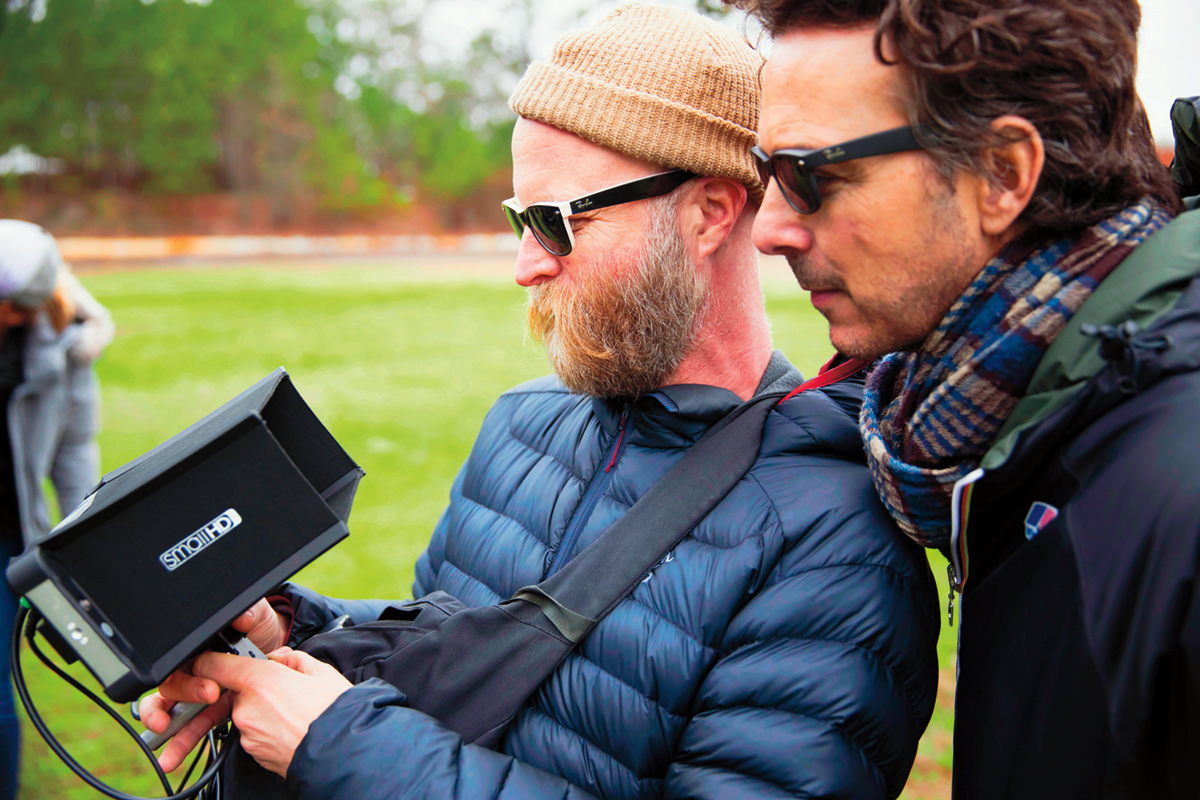
That same team also worked its magic on the Void set, where Eleven uses her ability learned at the Lab to connect with other people. But as Ross Duffer asks: “We’re actually [visualizing] someone’s mind. How do you do that on a limited budget?”
The answer, Duffer continues, is to use the limitations to your advantage, with a set that is simplicity itself. A pool, the size of a hockey rink with a lip a few inches high, painted black on the bottom, filled with a few inches of water, and surrounded on three sides by black theatrical drapes. Actress Millie Bobby Brown (Eleven) was carefully carried out to its center, to avoid disturbing the water surface. Murphy says they lit with “a whole bunch of Spacelights overhead. And then we put a massive diffusion frame underneath it all, so it’s just super soft.” Adds Ives, “It feels directionless – like there is no light there, yet there is light.”
The Technocrane was extended across the pool, minimizing any disruption to the water surface. Kimball then removed any disruptions that remained, except at Eleven’s feet, giving the appearance of her moving through black. The Void scenes always begin with a big pullback, starting one foot from Brown’s face, as the Technocrane/camera team smoothly retracts the arm, Stankiewicz skillfully keeping her in focus, and the process getting a speed-up in post.
Stranger Things is also packed with exciting chases, both in the netherworld and above. Those are typically done by mounting the 50-foot Technocrane, with a Libra head, on a Taurus Tracking Vehicle from Pro-Cam. Crumbley says of the setup, “We could drive it anywhere, and shoot either arm fully retracted and extend as they go by, or vice-versa. And break the bike chases up into pieces.”
Per his inner 80’s compass, Ives would light with large Maxibruts up on a Condor off in the distance, supplemented by a China ball hung above the boys to make their expressions visible. “We embraced big lighting there,” Matt Duffer describes. “It’s not naturalistic, but it’s the kind of lighting we grew up on.”
There are also tension-filled chases down hallways – such as when Will is trying to escape the approaching Shadow Monster, or as Bob (Sean Astin) unsuccessfully attempts to avoid a gaggle of Demodogs chasing him in the Hawkins Lab (filmed, as were many interior and exterior Lab scenes, at the long-defunct and very creepy Georgia Mental Health Institute on Emory University’s Briarcliff campus).
Tod Campbell remembers that it “took a pass or two to get the machinery set for what was required. We wanted Will running at full speed and had the 50-foot Technocrane. But it wasn’t long enough or fast enough to let him run as fast as he could and emote. And Shawn [Levy] said, ‘It’s not working.’”
Campbell turned to Ray Brown, who soon arrived with a Patriot car, which was then used for all such shots, with Campbell using a 10-mm lens, which, he says, accentuates the movement and makes the runner appear to be going even faster.
The Lab also had disturbing lighting effects. As Ives describes: “Any time evil is around, the power would definitely take a hit.”
“We would change the ballasts on the fluorescents,” Murphy notes, “to make sure they were new, so we could play with the voltage to get them to flicker.” When the power goes out in the lab, things are made even spookier with an odd orange glow from emergency lights, which Kimball would enhance in Resolve.
Lights are also used to convey those in the UDW who are communicating with those still here. Rigging Gaffer Jonathan Hilton spent weeks constructing a Christmas-light chain made of CAT6 media cable to allow individual lamps to be controlled via pre-programmed sequence (enabled by dimmer board operator/programmer Jim Dornemann) to allow Will to spell out words for his mother. And when Joyce first connects with her son with a tangle of white Christmas lights, Campbell says he “gave the controller to Shawn Levy, who operated them at his monitor. He was acting as the voice of Will, and it gave us all chills.”
by matt hurwitz
photos by jackson davis
LOCAL 600 CREW
Directors of Photography
Tim Ives
Tod Campbell
David Franco
A-Camera Operator/Steadicam
Bob Gorelick, SOC
A-Camera 1st AC
Mary Stankiewicz
A-Camera 2nd AC
Angela Bremner
B-Camera Operator
Jeff Crumbley, SOC
B-Camera 1st AC
Jason Lancour
B-Camera 2nd AC
Nelson Moncada
Utility
Kevin Wilson
Loader
Laura Ostapiej
Still Photographers
Jackson Davis
Tina Rowden
Publicist
Denise Godoy
